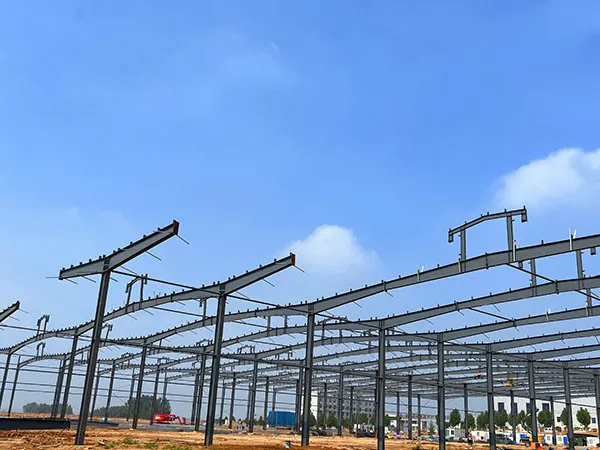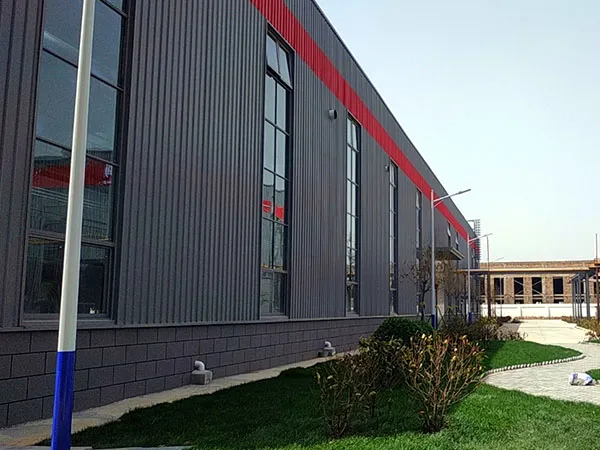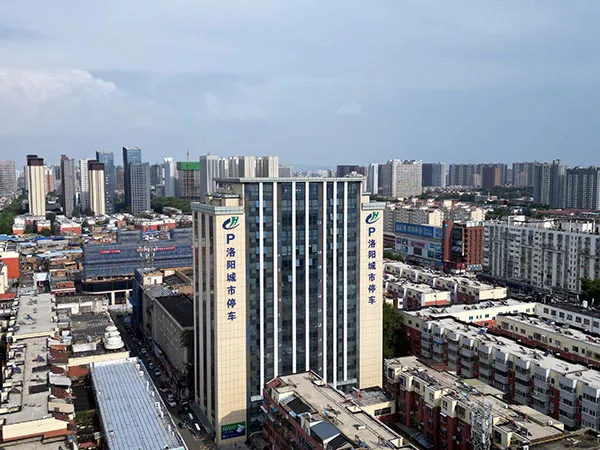Time:2025-09-10 12:51:12 Source:Sanjian Meichen Steel Structure
In modern construction, steel structures, with their exceptional strength, durability, and flexibility, have become a favored material among engineers and architects. However, steel structures are not a single concept. Based on the amount of steel used and the structural load-bearing capacity, they can generally be divided into light steel structures and heavy steel structures. These two types differ significantly in material selection, design concepts, construction methods, and application areas. This article will delve into the definitions, characteristics, advantages and disadvantages, and typical application scenarios of light and heavy steel structures, aiming to help readers gain a more comprehensive understanding of these two types and provide a useful reference for project selection.
What is steel structure?
Before delving into the differences between light and heavy steel, let's first clarify the concept of "steel structure." Steel structure refers to a structural system primarily constructed of steel components, typically consisting of sections and plates connected by welding, bolts, or rivets. It offers numerous advantages, including high strength, low weight, excellent seismic resistance, high degree of industrialization, short construction cycles, and recyclability.

Light Steel Structure
Definition and Features:
As the name suggests, lightweight steel structure refers to a steel structure that uses lightweight H-sections (welded or rolled; cross-section height less than 1000mm), lightweight trusses, thin-walled steel sections, and other components as its primary load-bearing components. Its characteristics are small component cross-sections, relatively low steel usage, and low overall weight. This structural system typically utilizes high-strength, thin-walled steel sections fabricated using cold-formed technology.
Key Features:
Lightweight: The structure's deadweight is only one-quarter to one-third that of traditional concrete structures, significantly reducing foundation loads.
High Strength: Steel's inherent strength is far superior to other building materials, allowing it to meet load-bearing requirements despite its lightweight structure.
Quick Construction: Most components can be prefabricated in the factory and assembled on-site, significantly shortening the construction period.
Energy-Saving and Energy-Efficient: Steel is recyclable and effectively reduces wet work and construction waste during construction.
High Space Utilization: Thin walls provide a large usable area. Excellent earthquake resistance: Steel's ductility allows it to absorb significant energy during earthquakes.
Typical Applications:
Lightweight steel structures are widely used in single-story factories, warehouses, gymnasiums, supermarkets, exhibition halls, lightweight office buildings, rural self-built homes, vacation homes, mobile homes, multi-story buildings, and temporary or semi-permanent structures requiring rapid construction and flexible layout.

Heavy Steel Structure
Definition and Characteristics:
Heavy steel structures generally refer to structural systems with large steel member cross-sections, high steel consumption, high load-bearing capacity, and long spans. According to the "Code for Design of Steel Structures," heavy steel structures are generally defined as H-section steel with a height ≥1000mm, steel consumption ≥50kg/m², or crane lifting capacity ≥25 tons. These structures are often used to support large loads and achieve long-span construction.
Key Characteristics:
High Load-Bearing Capacity: Able to withstand very large vertical and horizontal loads, they are ideal for high-rise and super-high-rise buildings and long-span structures.
Excellent Stability: Large member cross-sections provide high overall structural rigidity and excellent wind and earthquake resistance.
Wide Application: Suitable for a variety of complex structures, enabling more challenging architectural designs.
High Durability: The inherent excellent properties of steel ensure the long-term stability and service life of the structure.
Typical Applications:
Heavyweight steel structures are widely used in large industrial plants, high-rise and super-high-rise buildings, large bridges, stadiums, exhibition centers, aircraft hangars, large power stations, nuclear power plants, port machinery, and other projects that require extremely high load-bearing capacity, span, and stability.

|
characteristic |
Light steel structure |
Heavy steel structure |
|
Steel consumption |
Relatively few, small cross-section components |
Relatively more, the cross-section of the components is larger, and the steel consumption can reach more than 50kg/m² |
|
Component size |
The section height is usually less than 1000mm, mostly thin-walled steel |
The cross-section height is usually greater than 1000mm, and most of them are thick plate welded steel or heavy rolled steel. |
|
Carrying capacity |
Suitable for small and medium loads, such as single-story factories and warehouses |
Suitable for large and medium loads, such as high-rise buildings and long-span structures |
|
Span capability |
Smaller span (usually within 20-30 meters) |
Large span (up to 50 meters or even hundreds of meters) |
|
Construction period |
Fast, factory prefabrication, on-site installation |
Relatively long, component transportation and installation are more complicated |
|
Basic Requirements |
The foundation load is small and the foundation cost is relatively low |
The foundation load is large, the foundation requirements are high, and the foundation cost is relatively high |
|
Cost |
The cost per unit area is relatively low |
The cost per unit area is relatively high |
|
Fire prevention and anti-corrosion |
Effective fire prevention and anti-corrosion treatment is required to extend service life |
Both require fire protection and corrosion protection, but the requirements for the protective layer may be higher |
|
Application Areas |
Single-story factories, warehouses, gymnasiums, small commercial buildings, villas, etc. |
High-rise buildings, large bridges, stadiums, heavy industrial plants, power stations, etc. |
In actual projects, the decision between lightweight and heavyweight steel structures requires comprehensive consideration of the following key factors:
Project scale and functional requirements: The building's purpose, floor height, span, and load capacity are decisive factors. High-rise, large-span, and heavy-load projects inevitably choose heavyweight steel; whereas single-story, small-span, and light-load projects are more suitable for lightweight steel.
Budget and cost: Heavyweight steel structures typically involve higher material, transportation, and installation costs. Lightweight steel structures are often more economical, provided they meet their functional requirements.
Construction time requirements: If the project is under time pressure, the rapid construction advantage of lightweight steel structures is particularly significant.
Geological conditions: Heavyweight steel structures require high foundation bearing capacity, and areas with poor geological conditions may require expensive foundation treatment. Lightweight steel structures, due to their light weight, have relatively low foundation requirements.
Environmental and sustainability: Both structures offer the advantage of recyclable steel, but lightweight steel structures may be more effective in reducing construction waste and saving energy. Special environmental requirements, such as corrosion protection requirements in coastal areas and seismic performance requirements in seismically active areas, will influence the structural selection and design.
Example 1: A company plans to build a 3,000-square-meter, single-story standard factory building for light machining. Considering budget and schedule, and without the need for heavy cranes, a lightweight steel structure is an ideal choice, allowing for quick commissioning.
Example 2: A city plans to build a 30-story commercial complex, combining office, retail, and hotel functions. Due to the high floor heights, heavy loads, and stringent seismic requirements, a heavy steel structure is necessary to meet design and safety standards.
Q1: Are lightweight steel structures less safe than heavy steel structures?
A1: Not necessarily. Light steel structures are precisely calculated during design based on their load-bearing capacity and application scenarios. As long as they comply with relevant national codes and standards and are used within their applicable scope, they are completely safe. Heavy steel structures are suitable for taller, larger, and heavier loads.
Q2: Are lightweight steel structures prone to rust and have poor fire resistance?
A2: Steel does have the risk of rusting in humid environments, but modern lightweight steel structures undergo rigorous anti-corrosion treatments (such as galvanizing and anti-rust paint). Regarding fire protection, lightweight steel structures typically meet the required fire ratings through filling with non-combustible materials, wrapping with fireproof panels, or spraying with fire-retardant coatings. Like heavy steel structures, these structures require specialized fire protection design.
Q3: Is the construction cost of heavy steel structures necessarily higher than that of light steel structures?
A3: Generally speaking, yes. Heavy steel structures generally have higher construction costs than light steel structures due to their larger steel content, heavier components, increased construction difficulty and transportation costs, and higher foundation requirements. However, the specific cost requires a comprehensive assessment based on the project location, market prices, and design.
Both lightweight and heavy steel structures are indispensable components of modern architecture, each with unique advantages and applicable areas. Lightweight steel structures, with their lightweight, efficient, and economical characteristics, have demonstrated strong viability in small and medium-span, low- and medium-rise buildings, and fast-construction projects. Heavy steel structures, on the other hand, are the preferred choice for high-rise, large-span, heavy-duty industrial buildings, and infrastructure projects due to their superior load-bearing capacity and stability.
At the outset of project decision-making, a thorough understanding of the characteristics of both types of structures, combined with a comprehensive consideration of specific project requirements, budget, and environmental factors, is crucial to ensuring project success and achieving optimal benefits. Meichen Steel Structure, leveraging its extensive experience in both light and heavy steel construction, is committed to providing customized solutions and high-quality steel structure products to help you achieve exceptional projects.